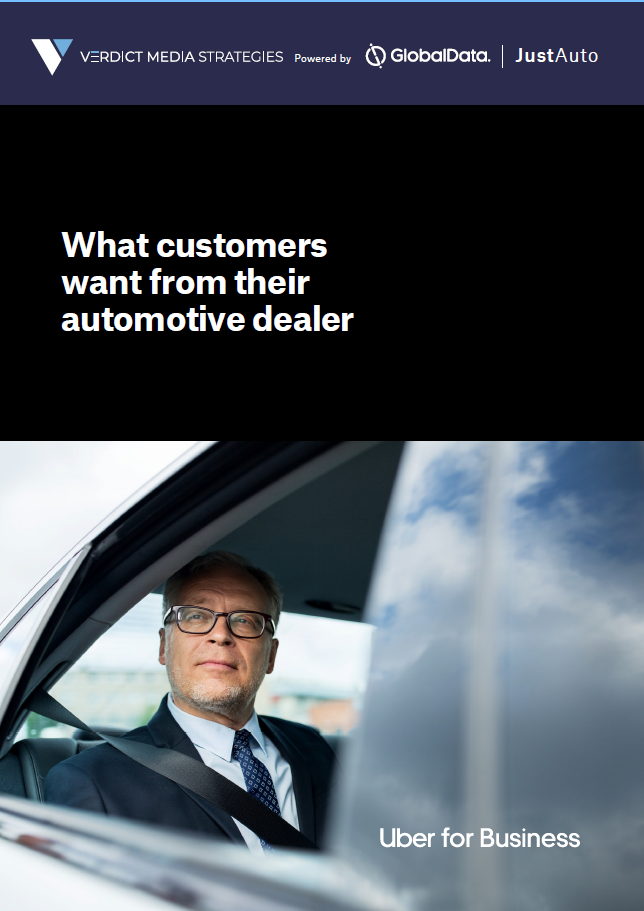
According to GlobalData research, average auto transaction prices have risen at above-inflation levels in recent years, creating a challenge for auto dealerships across the US. Factors such as supply chain issues and a shortage of semiconductors are impacting prices. Automakers have prioritised the manufacture of their most expensive cars to make up the shortfall, thus pushing greater costs onto customers.
Profits remain high for dealers and OEMs, but a low number of sales persists. Increased prices have made up for the relatively low volume of vehicles being sold.
“Prices are unlikely to fall significantly over the coming years due to a combination of electrification, increasing labour costs, potential supply chain difficulties, and OEM strategies,” adds David Oakley, Americas Vehicle Sales Forecasts manager at GlobalData. “Would-be buyers are being asked to part with more money than ever before, and therefore the need for dealerships to provide an outstanding experience for consumers is greater than ever.”
In October 2023, just-auto partnered with Uber for Business to host a survey to ascertain how the customer experience is evolving for automotive dealers in the US. The results suggest that, although profits remain high at the moment and dealerships are doing their best to maximise the customer experience, challenges lie ahead if such profits are to be sustainable.
The results of the survey were found by asking 250 automotive dealers based across the United States a series of questions concerning their operations. All 250 respondents were part of a dealership group. Chrysler, Dodge, Jeep, and Ram were the most common OEMs, with these four frequently stocked together. Other OEMs were Ford, Chevrolet, Nissan, and Honda, with 38 brands represented overall and many dealerships stocking multiple brands.
A challenging sales environment
For the 12 months leading up to the survey, most dealers (46.80%) reported no more than $10 million in sales. An overwhelming majority (78.0%) said they had sales beneath $24 million; only 4 reported sales over $100 million and 2 over $150 million.
Among these sales, of those surveyed most (40.40%) had sold less than 250 cars in 12 months. 235 of the 250 respondents (94%) did not sell more than 750.
In terms of service operations, the majority of businesses (30.8%) made between $5 million and $9 million in revenue, with 30% making between $2.5 million and $4.9 million through the same avenue.
While prices across the wider US economy have increased 19% since 2019, average transaction prices for new vehicles in the US have risen by 30.3% compared to December 2019. In the face of decreased sales, dealerships are maintaining high-profit margins against inflated costs by transferring the price to their customers.
“As of October 2023, the average new vehicle cost $45,644, around $4,000 higher than might have been the case without the Covid-19 pandemic and the subsequent disruptions to the global supply chain, which most notably affected the automotive industry by creating a shortage of semiconductors,” says Oakley.
Higher prices have been passed onto dealers from OEMS, which in turn are transferred to the consumer. This has resulted in both OEMs and dealers registering record profits despite a lower volume of sales.
Oakley continues, “The fact that vehicle inventories have generally been low since 2021 has led to an imbalance between supply and demand and kept pricing elevated, pushing out customers with a lower income.”
Alongside the high price of new vehicles, incentives for consumers also cratered in the US when the chip shortage struck and still have a long way to go to recover. As of October 2023, average incentives stood at $1,847, compared to typical levels of around US$4,000 before the pandemic.
To avoid the cost of a new car, many consumers are opting to spend money to maintain their current cars. Most respondents to the survey claimed they completed between 500-999 services (38.4% of respondents), or 1,000-2,499 (36.0% of respondents) in the last year.

Enhancing customer experience
Some customers nevertheless are still willing to pay for a new vehicle, but in order to justify such high expenditure dealerships must be more ready than ever to provide top-class customer service to match the large price tags.
The dealerships surveyed reported varying Customer Satisfaction Index (CSI) scores, the lowest being 70 and nine dealers reported scores of 99. With an average score of 91.9 and a median score of 93, it is clear that most dealerships are providing a more than satisfactory service to their clients.
The CSI score is generated from the average score (out of 100) which customers give a business based on four criteria: customer service, marketplace usability, price, and product quality.
That dealerships continue to score highly according to these metrics illustrates how, for the moment, customers are happy to pay high prices provided the customer experience justifies the expense. The challenge going forward, however, will be for dealerships to maintain such high scores alongside increasingly high prices and an expectant market.
Based on what the dealerships surveyed provided for their customers, it appears that most are doing their best to meet this challenge by continuing to offer a range of services to expedite the buying process. Most dealers offer vehicle pickup and delivery (84.80%) for consumers, with the remaining 15.2% saying they were interested in doing so if they weren’t already.
Many dealerships also reported offering a range of transportation services to their customers to facilitate the buying experience and maintenance appointments. 79.2% reported that they offered valet services, and many also offered outsourced services through Uber (60.8%) or taxis (56.0%). Some provided their own shuttle service (40.4%) or a loaner vehicle (29.2%).
However, there was a wide range of responses given to the question of how much these transportation services cost, with figures as low as $7,000 and as high as $2 million being reported. Given such a range, the average cost of providing transportation was high at $103,476, but the median was much lower at $38,000. A vast majority (84.80% of respondents) said they received reimbursement for rideshare to provide customers with transportation while working on warranty repair orders.
These figures, and the high CSI scores, reveal that dealerships are doing much to support their customers through the buying experience. This would suggest that the changing market is responsible for reduced sales rather than a lack of care from the dealerships.
Difficult challenges ahead
Year-on-year car sales in the US have surpassed expectations: according to GlobalData research, sales of 14.9 million units were predicted at the start of 2023 but are actually set to exceed that, with the market on track to sell 15.4 million units before 2024 begins. These survey results reveal that dealerships are doing their utmost to facilitate a smooth customer experience but nevertheless face a more challenging business environment than usual.
“It will be harder for dealerships to continue to generate profits than it has been in recent years,” concludes Oakley. “High pricing will also potentially be off-putting to many consumers. It could also be challenging in some areas if government legislation is aggressively pushing EVs that consumers don’t necessarily want.”
If profit margins are to be maintained, tough decisions remain for auto dealerships across the nation. These survey results show that many dealerships are already going to great lengths to ensure that the car buying service is as seamless as possible, they also suggest the landscape is set to remain competitive for years to come and further innovation will be needed.
In terms of actionable insights that can be gleaned from this survey, dealerships should address two key areas. The first is to focus on the importance of the CSI score. Based on the survey, while over two-thirds of dealerships scored ‘good’, one-third scored below 90 in a cumulative ranking of customer service, marketplace usability, price, and product quality.
An additional 69 respondents did not provide a CSI score, either because they did not have one or did not wish to reveal theirs. A good CSI score cannot be underestimated and improving an existing score to showcase incremental improvements to customers – or demonstrating how a high CSI score is being consistently maintained by top dealers – can be a notable point of difference for an increasingly discerning customer base.
Secondly, AI will undoubtedly prove to be a game changer in this – and most other – sectors. Dealerships should at least begin the process of educating themselves as to how it can help the customer experience in the short-to-long-term future. Adoption is still relatively low – approximately 50% of dealers surveyed – and there will undoubtedly continue to be reservations from some dealers as to how AI can help improve the customer experience, but even at a lower level AI will continue to impact. The smart dealers will implement and adopt AI where it can add a genuine point of difference, rather than as a gimmick.
In a challenging business environment and to effectively serve a changing customer base, innovative thinking and listening to the market is more essential than ever.
To learn more about the advantages Uber for Business offers automotive dealerships, download the document below.


